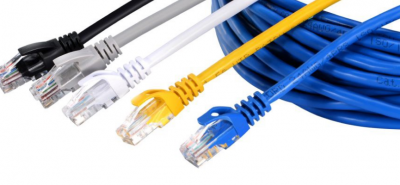Numerical Relays: Functions and Benefits
With the growth of technology, numerical relays today have drastically advanced from that of small microprocessors and continue to be an integral part of the electrical supply system. Numerical relays can be programmed and that’s what makes them a focal point of interest.
When numerical protection relays are being used on a protection device, they provide accurate protection, better reliability, easy troubleshooting, communication, and fault information.
Functions of Relay
Electrical engineering which was considered a static study is now a dynamic study. Multiple advancements including the digital signal processor and computer hardware are responsible for the improved efficiency of numerical relays in the protection of devices.
Today’s power system protection devices offer users with multiple integrated functions. These protection devices can multitask on features such as protection, control, measuring, and monitoring. They also have the communication capability to provide remote control and also the real-time data transfer.
Range of Usage and Benefits
The numerical relay system based protection devices cater to generation, transmission, and distribution systems. These systems not only multi-task but also do not occupy huge spaces to function.
The relays can record the parameter with the help of disturbance recorder flexibility along with the other settings. This means that an individual relay is enough to provide protection to every device.
Accurate results are derived as the device has multiple range of settings. A numerical relay system caters to the following areas:
Relay hardware and software, multi-protection attributes, dynamic protection attributes, data storage, and assimilation, instrumentation feature, self-check ability, communication attributes, adaptable, and cost-effective.
What are the Advantages of Numerical Relays?
- Compact Size: Numerical relays are dependent only on one system for all approach and utilize indication on LCD for its activation, within a smaller space. An important fact to consider is that the digital protection can be made physically smaller when there is need for less panel wiring than equivalent functions implemented using analog tech.
- Flexible: As the numerical relay depends on the software, it is easy to make customized modifications to achieve desired protection features. This in turn saves the cost for its user on replacing hardware. Upgrades are easy.
- Reliabile: Due the fewer connections, Numerical relays are more reliable. In case of electrochemical relays, mass interconnection and larger components causes’ problem resulting to non-reliability.
- Multiple Characteristics of Relays: The range of operation within the traditional models is too narrow while numerical relays are diverse and adoptable. Numerical relays have the feature of multi-tasking, which allows and strengthens different relay characteristics. As the relays provide better compatible protection, their efficiency is improved. All of this is achieved with the memory save feature in the microprocessor.
- Communication Capacity: With numerous advantages of the numerical relay, the most significant of it all is the ability of these relays to integrate with digital communication. An interface is added to bring the microprocessor-based-relay feature. Substation LAN is integrated with fiber optics to compete with the communication capacity.
This feature is connected with the data history feature of the numerical relay system. The data storage systems record the fault data and disturbances in turn helping to find the magnitude, duration and the nature of the fault.
- Auto-reset: By now, you already know how flexible the numerical relays are. In addition to that, they also have the feature of reset and self-diagnosis, which creates less dependence on the operating personnel. These features cannot be found in the electrochemical systems.
- Related benefits: Apart from the mainstream benefits that have been provided above, there are other ones too. For example, the modular frame in the numerical relay system allows the ease of service. By using microprocessor-based relays, a minimum burden is put on the instrument transformers.
With all the information above, it is clear that the numerical relay system has better advantages when it comes to the protection of devices when compared with the conventional ones. They are flexible, require less space, and are cost-effective.





LEAVE A COMMENT